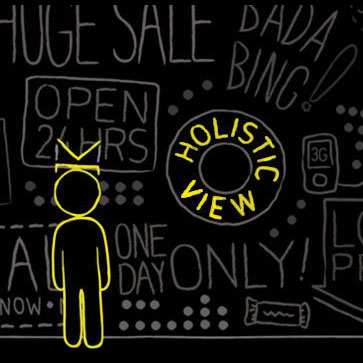Tips, Trends and Transparency in Video Advertising

Over the past year, Facebook came to video advertisers with its hat in its hands announcing issues with video metrics.
Other than not advertiser there, it may seem that advertisers do not have many options for ensuring the data they receive from third-party platforms is accurate and that their initiatives are effective.
The call for accuracy and transparency doesn't stop at Facebook, of course, and there are marketing platforms looking to help. Innovid, for example, released its "2017 Global Video Benchmarks Report," which details findings from a year-long study analyzing thousands of video campaigns with billions of impressions across 200-plus global brands. Website Magazine caught up with Innovid President Beth-Ann Eason who shares information about tips, trends and transparency in video advertising.
How can advertisers obtain objectivity on content platforms that offer limited visibility into key performance indicators?
 Beth-Ann Eason, President of Innovid: There are two key components when it comes to obtaining objectivity: being media agnostic and offering an open platform. Media neutrality ensures advertisers get access to the most transparent and objective performance metrics, with no bias towards certain publishers or platforms. An open platform ensures that advertisers can utilize their choice of measurement vendors (verification, viewability, research, etc.) to efficiently and effectively gain access to the performance metrics that are important to them.
Beth-Ann Eason, President of Innovid: There are two key components when it comes to obtaining objectivity: being media agnostic and offering an open platform. Media neutrality ensures advertisers get access to the most transparent and objective performance metrics, with no bias towards certain publishers or platforms. An open platform ensures that advertisers can utilize their choice of measurement vendors (verification, viewability, research, etc.) to efficiently and effectively gain access to the performance metrics that are important to them.
How can benchmarks help other advertisers understand their efforts better?
Eason: Comprehensive measurement and benchmarking provides advertisers the data they need to take control over their video performance by enabling them to better understand their audiences, hold media partners accountable, and optimize campaigns to achieve the best possible results.
What are some findings from your company's current report that point to critical trends for advertisers to be aware of?
Eason: One key trend is the expansion of connected TV & OTT devices. We see that digital video budgets continue to shift towards OTT devices, and that is supported from the data - Innovid saw a 27 percent increase in the number of advertisers running on OTT devices from H1 2016 to H2 2016.
Another trend is around brand safety and ad fraud, especially in light of recent news. Advertisers can ensure their valuable media budgets are not wasted on ad fraud or brand risk environments if they take advantage of the right solutions. After analyzing campaigns where ad blocking capabilities were integrated with partners DoubleVerify and Integral Ad Science, we found that the biggest contributors to blocked impressions were (in order): ad fraud, inappropriate/non brand safe content, custom blacklists, and geo. Through integrated solutions, Innovid and DV/IAS enabled advertisers to reinvest 12 percent and 9 percent of impressions respectively into optimal media to most effectively deliver their messaging to consumers.
A third trend is how advanced video outperforms pre-roll. By taking advantage of advanced video, advertisers can derive more value out of their :15 and :30 second video spots, as it yields higher benchmarks across the board over standard pre-roll, including a 561 percent lift in user activity, and delivers an average of 41 additional seconds of time earned, nearly tripling the time spent with a paid :15s second ad spot.
Lastly, the shift from Flash to HTML is an important development. While it has been predicted to happen over the past few years, the Flash to HTML transition for video has been slower than anticipated - until now. Recent developments like Google discontinuing Flash support for video seem to have been the catalyst for this transition - HTML was the fastest growing tag format, increasing 357 percent from H1 2016 to H2 2016.
Was there anything that surprised you from the 2017 Global Video Benchmarks Report?
Eason: We found it interesting that the entertainment gaming, auto, and travel & tourism industries are driving the trend toward CTV marketing, and generating the greatest percent of CTV impressions compared to other industries. The CPG vertical is leading the trend in video marketing on mobile devices, allocating more video impressions to mobile devices than any other vertical measured.
Anything else you'd like to add?
Eason: Innovid is committed to providing a fully transparent, high-quality measurability solution for advertisers, and the company has an active role in ensuring video ad performance, quality control and accurate measurement through various industry certifications and verifications, as well as its own proprietary tools and technologies. Innovid partners with key video advertising players and platforms to help validate quality of media and ad performance, and actively assists these companies in opening up to third party measurement with help from Innovid's solutions. We believe the future of data-driven marketing is the combination of an open platform + measurement + decisioning.









